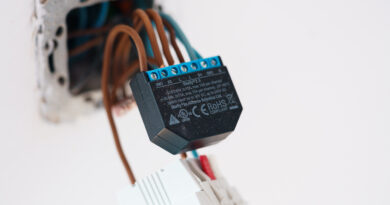The Ultimate Guide to Conducting an Effective Electrical Safety Audit
Introduction
In any workplace or residential environment, electrical safety is of paramount importance. Conducting regular electrical safety audits is essential to identify potential hazards, ensure compliance with safety regulations, and protect individuals from electrical accidents. In this comprehensive guide, we will walk you through the key steps and considerations for conducting an effective electrical safety audit.
- Establish the Purpose and Scope:
Before initiating an electrical safety audit, clearly define the purpose and scope of the audit. Determine if it will cover the entire facility or specific areas, such as high-risk zones or newly installed electrical systems. Clearly communicating the objectives will help focus the audit and ensure all necessary areas are examined.
- Familiarize Yourself with Regulations:
Thoroughly familiarize yourself with the electrical safety regulations and standards applicable to your location or industry. This may include codes such as the National Electrical Code (NEC), Occupational Safety and Health Administration (OSHA) guidelines, and local building codes. Understanding these regulations will guide your audit process and ensure compliance.
- Create an Audit Checklist:
Develop a comprehensive checklist that covers all aspects of electrical safety. Include items such as electrical panels, wiring systems, grounding, protective devices, equipment maintenance, and emergency procedures. A checklist ensures consistency and helps auditors systematically evaluate each component.
- Inspect Electrical Systems and Equipment:
Conduct a detailed inspection of electrical systems and equipment. Check for damaged or worn-out wires, loose connections, overloaded circuits, and improper grounding. Verify the condition and suitability of equipment for its intended use. Inspect electrical panels for proper labeling, clear access, and compliance with safety standards.
- Review Documentation and Maintenance Records:
Examine documentation and maintenance records related to electrical systems. Review records of inspections, testing, repairs, and equipment maintenance. Ensure that the documentation is accurate, up to date, and accessible. Identify any gaps or inconsistencies that need to be addressed.
- Test Grounding and Electrical Protection Devices:
Test the effectiveness of grounding systems and electrical protection devices, such as circuit breakers, fuses, and ground fault circuit interrupters (GFCIs). Use appropriate testing equipment to verify their proper functioning and adherence to safety standards.
- Evaluate Employee Training and Awareness:
Assess the training and awareness levels of employees regarding electrical safety. Review training records and interview personnel to ensure they understand safe work practices, know how to respond to electrical emergencies, and are aware of potential hazards.
- Identify Potential Hazards and Risks:
Identify potential electrical hazards and risks that could cause accidents or injuries. This may include exposed wires, inadequate insulation, improper storage of flammable materials, or lack of proper signage. Prioritize the hazards based on their severity and implement corrective actions accordingly.
- Document Findings and Recommendations:
Document all findings, observations, and recommendations from the audit. Clearly outline the identified hazards, non-compliance issues, and suggested corrective actions. Include photographs, diagrams, or supporting evidence to enhance the understanding of the issues.
- Develop an Action Plan:
Based on the audit findings, develop a comprehensive action plan that addresses the identified issues. Prioritize the corrective actions and assign responsibilities to individuals or departments. Establish timelines for implementation and follow-up on the progress regularly.
Conclusion:
Conducting an effective electrical safety audit is crucial to maintaining a safe working or living environment. By following these key steps and considerations, you can identify potential hazards, ensure compliance with regulations, and minimize the risk of electrical accidents. Remember, electrical safety is an ongoing process, and regular audits are vital to promote a culture of safety and protect individuals from harm.




